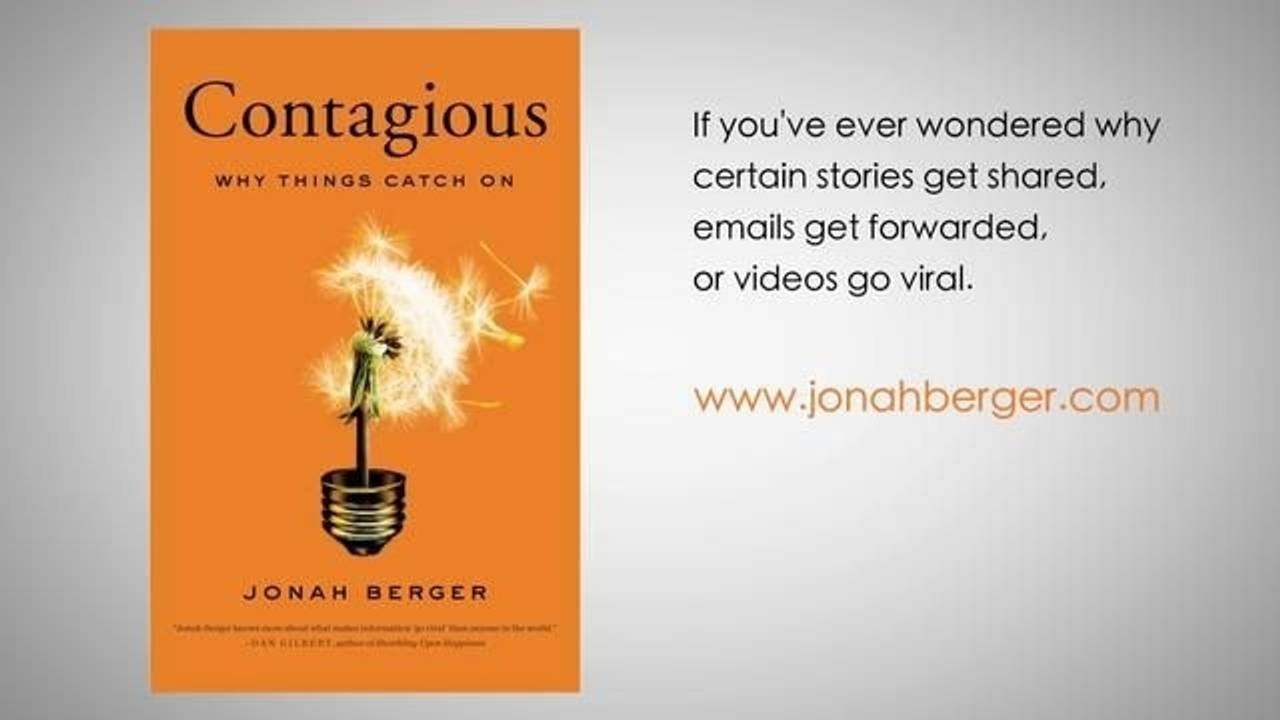We are used to reading everywhere that
content is king and that most marketing efforts should be focused on developing a good content strategy. But marketing is not like maths where 2+2=4,
so what’s the magic formula to make content go viral? In this ‘Contagious: Why Things Catch On’ review, we’ll explore exactly that.
Unsurprisingly, there’s no such thing as a magic formula but Jonah Berger reveals the secret behind word-of-mouth and why people buzz about some products more than others.
If you are a generalist, content or brand marketer, I would highly suggest reading this book. It walks you through real stories and examples of viral campaigns to explain the main six principles to drive awareness and engagement.
He calls them ingredients or
STEPPS: Social Currency; Triggers; Emotion; Public; Practical Value; Stories. And explains how each of them works in each chapter.
1. Social currency – “We share things that make us look good”
Word of mouth has changed a lot throughout the past ten years. What used to be more about asking friends and family for advice has turned into social reviews and influencers’ opinions.
Berger defines this
new word-of-mouth trend as social currency:
people share experiences, ideas, and topics
to make themselves and their lives
appear more fascinating and interesting to others.
He highlights different examples. The most remarkable ones are: Blendtec (a company that went viral by blending phones) and The Blair Witch Project (a film released in 1999, tells the story of three student filmmakers hiking the mountains of Maryland)
2. Triggers – “Top of mind, tip of tongue”
In this chapter, he discusses what triggers certain products and brands to be discussed more than others. As well as the relation between levels of interest and stimuli in surrounding environments to determine what is at the tip of our tongues and the top of our minds.
He discusses quite a lot of examples here: Disney and Cheerios, Mars chocolate bars and Rebecca Black and her, let’s say catchy, Friday song.
3. Emotion – “When we care, we share”
Next in this ‘Contagious: Why Things Catch On’ review, Jonah analyses the New York Times most-emailed list to discover why emotions can dramatically increase our need to share. When our emotions are tugged at in just the right way, we buy, talk, shop, share, spread, and express interest.
4. Public – “Built to show, built to grow”
This chapter talks about the power of observation and perception in the public eye. People tend to follow others, but only when they can see what those others are doing.
As simple as “shirts are better marketing strategies than socks because they are more visible”
He chooses a fantastic example to prove this: Why do you think the Apple logo is upside down on laptops? He walks you through Steve’s Jobs thoughts prior to launching the new MacBook and why he decided to do it this way.
5. Practical value – “News you can use”
Practical value is all about sharing useful information that will help others save time, energy and resources.
Wouldn’t you share something with your relatives or friends if you thought it was going to be useful for them? Basically, this question triggers the rationale behind most pricing strategies.
Berger helps the reader further understand how consumers perceive ‘value’, which often has nothing to do with money.
Most of the examples in this chapter are based on the Rule of 100.
The eye illusion of discounts is expressed in % or dollars.
6. Stories – “Information travels under the guise of idle chatter”
In this final chapter of ‘Contagious: Why Things Catch On’, Berger reinforces the strategy of storytelling: People do not just share information, they tell stories.
But in order for brands to benefit from them, these must not only be shared but they should also relate to the company’s products, services, or messages.
Otherwise, it’s just non-purpose guerrilla marketing.
Berger explains Dove’s “real beauty” campaign from end to end which proves that storytelling and UGC are key for campaign success.
You can purchase the book
here.
Final note: This is a fantastic book to read to reinforce your marketing instincts, whether you are a junior or a senior marketer. We used to think that virality was just random and unpredictable. Now we know it’s not true and there is a lot of psychology and content marketing behind it.
We hope you enjoyed this ‘Contagious: Why Things Catch On’ review.
Written by Esther Méndez






